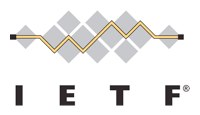 The fourth day for our Deploy360 team at the 89th IETF meeting could perhaps best be described as “utter madness” as there are multiple working groups meeting on ALL of the topics we cover here: IPv6, DNSSEC, securing BGP and even our new TLS for Applications area. In particular, several of the major DNS groups are holding their only meetings today.
The fourth day for our Deploy360 team at the 89th IETF meeting could perhaps best be described as “utter madness” as there are multiple working groups meeting on ALL of the topics we cover here: IPv6, DNSSEC, securing BGP and even our new TLS for Applications area. In particular, several of the major DNS groups are holding their only meetings today.
Details and links are farther down below (along with remote participation info), but as we mentioned in our pre-IETF89 posts about IPv6, DNSSEC and Securing BPG, today will bring:
- The meeting of the DANE Working Group (read more about the DANE protocol).
- The work in SUNSET4 on phasing out IPv4 and the second meeting of v6OPS focused on operational guidance for IPv6.
- The 6TiSCH work on IPv6 in resource-constrained “Internet of Things” kinds of networks.
- The IDR working group has many work items relating to BGP.
- There is a new DBOUND BOF session that is looking into boundaries in the DNS related to domain names and how those could apply to security policies.
- In EPPEXT there is an extension proposed for how to securely pass DNSSEC keying material between operators and registries.
Beyond all of those, there are two other Thursday meetings that have come to our attention:
- In the 1300-1500 block when we already have 3 other sessions of interest, the SIPCORE Working Group is planning a 45 minute discussion on “Happy Eyeballs for SIP” looking at what needs to be done to make SIP work over IPv6. (Where SIP is the dominant open standard used in voice-over-IP.)
- At the end of the day, a brand new timeslot was opened up from 1840-2040 where the DNSOP Working Group is going to get a head-start on their Friday morning agenda and very specifically focus on the outcome of yesterday’s DNSE BOF around what can be done to protect the confidentiality of DNS queries. The main point of this evening timeslot is so that TLS can be discussed with some of the people from the UTA Working Group joining in to the discussion (since UTA and DNSOP are scheduled at the same time on Friday morning).
All in all its going to be an extremely busy day for all of us! We’re looking forward to it, though, as great things are definitely happening!
Thursday, March 6, 2014
dane (DNS-based Authentication of Named Entities) WG
0900-1130 UTC, Park Suite
Agenda: https://datatracker.ietf.org/meeting/89/agenda/dane/
Documents: https://datatracker.ietf.org/wg/dane/
Charter: http://datatracker.ietf.org/wg/dane/charter/
sunset4 (Sunsetting IPv4) WG
0900-1130 UTC, Palace C
Agenda: https://datatracker.ietf.org/meeting/89/agenda/sunset4/(combined with the Multiple Interface (mif) WG meeting)
Documents: https://datatracker.ietf.org/wg/sunset4/
Charter: http://tools.ietf.org/wg/sunset4/charters
v6ops (IPv6 Operations) WG
1300-1500 UTC, Sovereign Room
Agenda: https://datatracker.ietf.org/meeting/89/agenda/v6ops/
Documents: https://datatracker.ietf.org/wg/v6ops/
Charter: https://datatracker.ietf.org/wg/v6ops/charter/
6tisch (IPv6 over TSCH mode of 802.16e4)
Thursday, March 6, 2014, 1300-1500 UTC, Buckingham Room
Agenda: https://datatracker.ietf.org/meeting/89/agenda/6tisch/
Documents: https://datatracker.ietf.org/wg/6tisch/
Charter: https://datatracker.ietf.org/doc/charter-ietf-6tisch/
idr (Inter-Domain Routing Working Group)
1300-1500 UTC, Blenheim Room
WG Agenda: https://datatracker.ietf.org/meeting/89/agenda/idr
Documents: https://datatracker.ietf.org/wg/idr/
Charter: https://datatracker.ietf.org/wg/idr/charter/
sipcore (Session Initiation Protocol Core)
1300-1500 UTC, Palace C
WG Agenda: https://datatracker.ietf.org/meeting/89/agenda/sipcore
Documents: https://datatracker.ietf.org/wg/sipcore/
Charter: https://datatracker.ietf.org/wg/sipcore/charter/
dbound (Domain Boundaries) BOF
1520-1650 UTC, Blenheim Room
Agenda: https://datatracker.ietf.org/meeting/89/agenda/dbound/
List of BOFs: http://trac.tools.ietf.org/bof/trac/
eppext (Extensible Provisioning Protocol Extensions) WG
1700-1830 UTC, Park Suite
Agenda: https://datatracker.ietf.org/meeting/89/agenda/eppext/
Documents: https://datatracker.ietf.org/wg/eppext/
Charter: http://tools.ietf.org/wg/eppext/charters/
dnsop (DNS Operations) WG
1840-2040 UTC, Sovereign Room
Agenda: https://datatracker.ietf.org/meeting/89/agenda/dnsop/
Documents: https://datatracker.ietf.org/wg/dnsop/
Charter: http://tools.ietf.org/wg/dnsop/charter/
Remote Participation
You don’t have to be in London to participate in the meetings of IETF 89. You can also:
- Listen to live audio streams.
- Participate in Jabber chat rooms to ask questions.
- Download the slides planned for each session.
- Listen and watch “Meetecho” conferencing sessions that provide an integrated view of slides, audio, chat and video.
Information about how to participate can be found on the IETF 89 Remote Participation page. Keep in mind that times for London are in UTC.
 If you are interested in DNSSEC and/or “DNS security” in general, there is going to be a great amount of activity happening in a number of different working group sessions at IETF 90 next week in Toronto.
If you are interested in DNSSEC and/or “DNS security” in general, there is going to be a great amount of activity happening in a number of different working group sessions at IETF 90 next week in Toronto.


